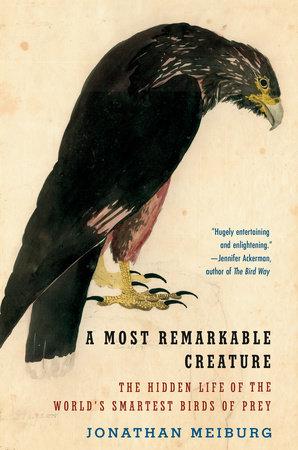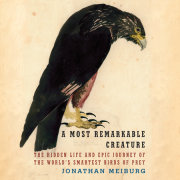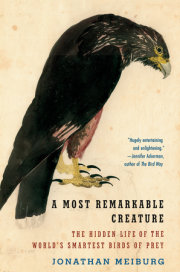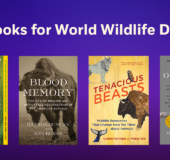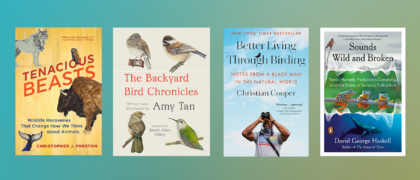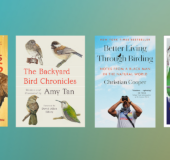1
An Unanswered Question
It’s the turning of the Earth that spins the winds around Antarctica. The same force that curls hurricanes into deadly spirals gathers cold gales descending from the South Pole, where ice entombs entire mountain ranges, and launches them into a west-flowing moat of air that piles the seas into waves seven stories tall, shutting out the warmer world to the north. There’s nothing to oppose them: sail a boat forever along the sixty-third parallel and you’d never see anything but black-and-white water, the spouts of whales, and the careening shapes of albatrosses skidding down the air on eleven-foot wings, a churning world that’s our planet’s most enduring scene.
But this endless polar cyclone frays along its northern border, where rogue winds peel off into the great oceanic basins—Indian, Pacific, Atlantic—and Atlantic-bound gusts first strike the green world in the fjords and islands of Tierra del Fuego, where the Andes march into the sea. The winds fling plumes of wet sand against glacially sculpted cliffs and prune dripping forests of evergreen beeches into bizarre shapes—forests that are, in a way, the winds’ making, since their fierce chill forces warm air traveling south from the Amazon to drop its hoarded water. Tierra del Fuego’s wooded slopes and valleys are carpeted in mosses, ferns, and sundew, its trees draped in pale wisps of old-man’s beard; and where its forests meet the sea, flightless sea ducks and giant otters shelter in a labyrinth of coves, inlets, and cobbled beaches that seem freshly carved from the bedrock of the world.
Charles Darwin saw these southernmost forests in the early months of his adventure aboard HMS Beagle and thought their grandeur rivaled the tropical woodlands that blew his mind in Brazil. But “in these still solitudes,” he noted, “death, instead of life, is the predominant spirit.” Without ants or termites to mill them down, Tierra del Fuego’s dead trees stand and lie beside the living for years, and crow-sized woodpeckers knock splinters from their trunks with the dull thunk of hatchets. Even now, when you can fly the length of Darwin’s five-year odyssey in two days, Tierra del Fuego’s fog-bound channels are seldom visited, largely inaccessible, and since the demise of the Amerindians who lived there for thousands of years, unpeopled. Ships occasionally use them to shelter from the mighty Pacific swells, but almost no one lingers.
Nor do the winds. Soaring over the low crests of the southern Andes, they beat north and east to glance off the unclimbed peaks of Isla de los Estados, where Jules Verne imagined a lighthouse at the end of the world, and bend the dry grasses on the plains of Patagonia. Then they go to sea again, dragging a train of whitecaps to soften and die in the tropics. But as they leave the high latitudes, they graze a last spot of land—a cluster of treeless, wasp-waisted islands in the northwest corner of the Falkland archipelago called the Jasons. And it’s here, in the lee of fallen boulders and tufts of grass, that a hidden marvel huddles out of the wind’s reach: one of the strangest and most wonderful animals on earth.
It didn’t stay hidden from Darwin, but it took him by surprise in a place he was impatient to leave. The Beagle and its companion, HMS Adventure, called in at the Falklands twice before threading through the Strait of Magellan into the Pacific, and Darwin thought the islands’ brown, undulating moorlands looked “desolate and wretched,” especially compared to the Brazilian forests where it was “not possible to give an adequate idea of the higher feelings of wonder, astonishment, and devotion, which fill and elevate the mind.” The Falklands’ monotonous landscape, broken only by a few low mountains and ridges of granitic quartz, suggested none of these feelings. “I can very plainly see,” he confided in a letter to his sister, “there will not be much pleasure or contentment, till we get out of these detestable latitudes & are carrying on all sail to the land where Bananas grow.”
It can be hard to picture Darwin as anything but a white-bearded ancient with a thousand-yard stare, but when the Beagle left England he was only twenty-two, a rich kid with an assured future as a country priest. He’d been invited aboard as much to keep the ship’s melancholy young captain company as to advance the cause of science, and his unpaid role as a naturalist was incidental to the ship’s official mission of mapping the treacherous coasts at the southern tip of South America. Darwin’s only real qualification was an undistinguished bachelor’s degree from Cambridge, where he often devoted more time to the upper-class pastimes of riding and shooting than to his studies, and even his best reference conceded he was not “finished”; he was simply an amiable and wealthy young man with a growing interest in rocks and insects, a yen for adventure, and a quality his uncle fondly described as an “enlarged curiosity.”
The Beagle’s five-year voyage, Darwin knew, would let him indulge this curiosity in places few naturalists had ever seen; and after convincing his reluctant father to pay his way, young Charles resolved to wring all he could from these years of freedom—even on cold, barren islands that left him pining for the tropics. Riding and shooting, as it happened, were useful skills in the Falklands, whose human population consisted of a single British officer and the remnants of a failed Argentine penal colony. Among the former prisoners were a contingent of gauchos, the legendary horsemen of the Pampas, who liked to chase feral cattle across the islands’ waterlogged peatlands, and Darwin convinced a pair of them to take him along on one of their excursions.
For five days, they rode at a gallop through blinding squalls of snow and ice, dodging fierce bulls who weren’t pleased to see them, sleeping on the bare ground, roasting their suppers of wild beef on fires stoked with bones instead of wood. Darwin’s horse slipped and fell in hidden pockets of thick black mud, soaking him through, and by the sixth morning he could hardly wait to get back to his cramped cabin aboard the Beagle. But the ride gave him new mysteries to ponder—and chief among them was the astonishing tameness of the Falklands’ wildlife. Grazing flocks of native geese barely flinched as Darwin and the gauchos thundered past, and even the legendarily cryptic birds called snipe—seen only in the distance, if at all, in England—let him come almost close enough to touch them. Other animals were bolder still: an inquisitive songbird probed at his shoes with its thin, curved beak, and
the wolfish foxes unique to the islands were so tame that the gauchos could kill them by holding out a piece of meat in one hand and a knife in the other. These gullible carnivores, known locally as warrahs, “have been observed to enter a tent,” Darwin wrote, “and actually pull some meat from beneath the head of a sleeping seaman.” He suspected—correctly—that their fearlessness would soon lead to their extinction.
But a third animal, a handsome bird of prey that resembled a cross between a hawk and a raven, seemed to have an enlarged curiosity of its own. It had an orange face, a silver-gray beak, and glossy black plumage, and it massed in noisy gangs at the islands’ only settlement to beg for scraps of kitchen garbage. Unlike the wary hawks and falcons Darwin knew in England, these “mischievous” birds could walk and run with the speed and agility of pheasants, and the crews of the Beagle and Adventure soon learned that their interests extended beyond food. “A large black glazed hat was carried nearly a mile,” Darwin wrote, “as was a pair of the heavy balls used in catching cattle . . . [and] a small Kater’s compass in a red morocco leather case, which was never recovered.” The Adventure, which surveyed the coasts of the Falklands while the Beagle made a circuit of islands in Tierra del Fuego, had to post a lookout to prevent them from flying aboard and tearing the leather from its rigging.
When the two ships met again, the Adventure’s crew offered Darwin stories of the “boldness and rapacity of these birds,” mirroring the tales of whalers and sealers who’d been using the Falklands as a base for over a century. The sub-Antarctic world was full of strange animals—leopard seals, beaked whales, macaroni penguins—but the hat-stealing birds of the Falklands were unique. “The sailors who visit these islands,” wrote one sealer, “being often much vexed at their predatory tricks, have bestowed different names upon them, characteristic of their nature, as flying monkeys, flying devils, etc, etc.”
Astonishing as they were, Darwin also knew they weren’t entirely singular. He’d just met some of their close relatives on the South American mainland, an odd and distinctive guild of scavengers that were unlike any birds he’d ever seen. The most common was a jay-sized, dusty-brown bird called a chimango, which gathered in flocks at the carcasses of cattle and horses in the grasslands south of Buenos Aires, but the most conspicuous was a larger, more elegant creature now known as a southern crested caracara—a dignified-looking bird with a yellow face and a flattened black crest like a mortarboard cap. Both birds “possess one family air,” Darwin wrote, “and agree in habits with the Vultures in the following respects: in living chiefly on the flesh of dead animals, in quickly congregating at any spot, where an animal may have died; in gorging themselves till their craws protrude; in their tameness, or boldness with respect to mankind.” The sound of the crested caracaras’ weird, rattling call—a dry karruk-karruk—lingered in Darwin’s mind, along with the contorted pose they struck as they uttered it, throwing their heads back until they nearly touched their tails. Despite their heraldic appearance, their “necrophagous habits” left him feeling uneasy in the deserts of Patagonia, where “they are very evident to any one who has fallen asleep on the desolate plains,” he wrote, “for when he wakes, he will see, on each surrounding hillock, one of these birds patiently watching him with an evil eye.”
The flying devils of the Falklands, however, puzzled him most of all. They’d been known to science* since 1775, when a naturalist traveling with the British explorer James Cook shot one in Tierra del Fuego, but no one had described their unusual behavior. Darwin tried to fill the gap by devoting more ink to their antics in The Voyage of the Beagle than he gave any other bird, and his account has the bemusement and mild alarm you’d expect from a young man staring down a predatory bird bent on stealing his hat. Though he didn’t speculate about what they planned to do with their loot, Darwin did wonder why they’d chosen these remote islands for their metropolis. Like the giant tortoises and tame mockingbirds he would soon meet in the Galápagos, the Falklands’ unique caracaras suggested that larger, unexplained forces—the real objects of his interest—were at work. But he set the mystery of their origins aside, and never took it up again.
Neither did anyone else, which surprised me when I met these birds two centuries later. Scientists have combed through Darwin’s notebooks for insights he didn’t (or couldn’t) pursue: he correctly predicted, for example, that a species of moth would be discovered whose tongue could sound the depths of a foot-long orchid from Madagascar, and some of his stray thoughts have led to entire fields of scientific inquiry. But the riddle of the feathered thieves at the end of the world—now called striated caracaras—has remained. A few still live on the remote coasts of Tierra del Fuego, and though warrahs and gauchos vanished from the Falklands soon after Darwin’s visit, striated caracaras still cling to life on the archipelago’s outer islands, where they hunt and scavenge in colonies of penguins, seals, and albatrosses. They are the southernmost birds of prey on Earth, and among the rarest: no more than a few thousand are left, a number only slightly larger than the wild population of giant pandas.
But if you visit them, they refuse to behave like a species on the verge of extinction. They’ll pluck the cap from your head, tug at the zippers of your backpack, and meet your eye with a forthright, impish gaze—and it’s this earnest, playful quality, not their rarity or remoteness, that caught and held me when I met them twenty-five years ago. Striated caracaras seem disarmingly conscious, and they prod at the turf with their bills and feet and crane their necks to peer at everything with keen but slightly dubious interest, as if they’ve just emerged from the ark and wonder what else the world might have to offer. In the 1920s, the Falklands’ official naturalist implored the government to rescind a bounty on their beaks, calling them “an ornament of the local avifauna” and noting that “from their point of view, every unfamiliar object demands immediate investigation.” The first ones I saw stared back at me so intensely that I felt slightly abashed, as if I owed them an explanation.
Since then, I’ve returned to the Falklands every few years to work with the researchers trying to keep these unusual birds from the fate of the warrahs. It takes several days and an array of small planes and boats to reach them, but the thrill of seeing them again never fades: even after I’ve helped trap them with snares, weighed them in burlap sacks, taken blood samples from their wings, and attached identifying rings to their legs, I’ve watched them ruffle their feathers and walk right back toward me, as if compelled by a single burning question: What are you?
Copyright © 2021 by Jonathan Meiburg. All rights reserved. No part of this excerpt may be reproduced or reprinted without permission in writing from the publisher.

